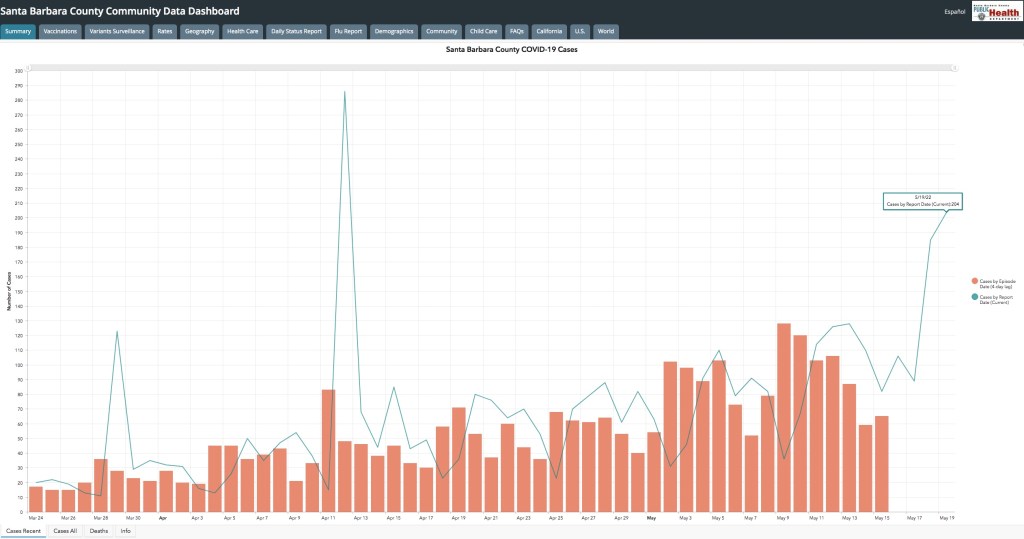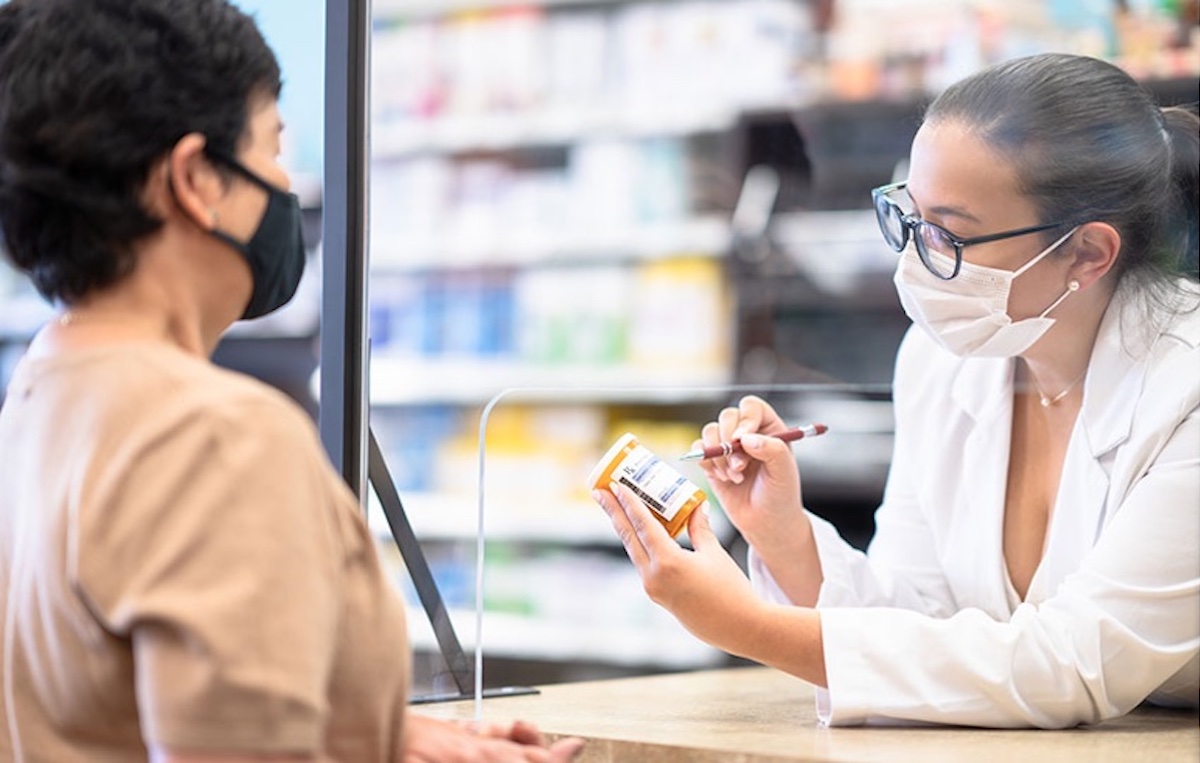If grocery markets and crowded retail stores are anything to go by, about half of Santa Barbara thinks it’s a good idea to wear a mask indoors in public places, even though the mask mandate was eliminated in February. Employees who meet regular customers and first-time visitors face-to-face every day have seen coworkers and friends absent from work because of a rise in COVID cases, and they’ve decided to be careful. The numbers at the county COVID dashboard bear out what they’ve seen: The new-cases graph bounces up and down, but since April, the trajectory has steadily gone up, with the county’s weekly coronavirus cases this past week roughly doubling.
While infections have increased significantly, hospitalizations — though higher — have not compromised the health-care system. Illnesses are less severe than before — many patients learn they have COVID when they go to the hospital for other procedures — either due to vaccination or remaining immunity from a recent infection. COVID remains the leading cause of respiratory illness in the community, said Dr. Lynn Fitzgibbons, an infectious-disease specialist and educator at Cottage Health. And testing remains important to know the level of what is a very, very contagious disease, she said.

A new nationwide program, Test to Treat, has assembled all the ingredients for COVID care in a single place. In Santa Barbara, they can be found at the Public Health trailer at Direct Relief and the Santa Maria Fairgrounds. (See publichealthsbc.org/test-to-treat or call the Santa Maria site at [888] 634-1123 x8 to make an appointment.) Anyone with a positive test either at home or at the health-care site will speak with a nurse in person or through video, explained Dr. Henning Ansorg, Santa Barbara County’s health officer, to check them out for the medication — most often Paxlovid.
“Test, telehealth consult, and medication are all free of charge at those sites!” Ansorg said. CVS has some locations that fulfill all these needs, he added, and most pharmacies are now carrying the medication, after a shortage last month. Time is of the essence in getting tested as the medication should be started within five days of the onset of symptoms.
The new wave of cases is rolling across California, with average cases for the week rising to more than 9,000 last Friday, compared to 7,000 the Friday before, and 5,000 the Friday before that. San Francisco is seeing the greatest spikes in the number of cases, according to the Los Angeles Times, but Santa Barbara County has the largest percentage rise — 112 percent during the past two weeks, going from 107 to 228 cases a week for every 100,000 residents — followed by Santa Clara County with 111 percent.
Sign up for Indy Today to receive fresh news from Independent.com, in your inbox, every morning.
At work, said Dr. Ansorg, is infection and reinfection. “Unfortunately,” he said, “persons who got COVID during the Delta wave last summer could get it again with the original Omicron.” That bug, prevalent during January, created a short-lasting immunity. “The later-appearing Omicron variants — BA.2 and BA.2.12.1 — are now able to reinfect someone who had Omicron earlier this year,” Ansorg explained.
Wastewater, which is another way to track the COVID virus, is measured weekly in Santa Barbara; it was up for the first week of May and down in the second week. San Francisco and Los Angeles are measuring wastewater two or three times a week, and the 10-day rolling average was declining or leveling off, according to data at the Cal SuWers Network. Dr. Fitzgibbons has had her eye on the wastewater data, too, and from the Santa Barbara and Los Angeles results, “It’s certainly possible that we could already be on the downswing,” she said with optimism, but she agreed with Ansorg that it meant there was a lot of disease in Santa Barbara.
As well as being less severe — more apt to cause cold-like symptoms rather than pneumonia — Omicron produces symptoms more rapidly. They start within two or three days of exposure, rather than the three to five days with the earlier variants, which means home COVID tests work sooner. To protect against the coronavirus, Ansorg recommended what Public Health has been advising all along: Wear a good mask (N95s and KN95s are best), avoid crowds, and get vaccinated or boosted.
Currently, second boosters are recommended for Pfizer and Moderna vaccines five months after the last shot for people over the age of 50, for people over the age of 12 who have compromised immune systems, and for those 18-49 years old who got a Johnson & Johnson vaccine.
They remain a good protection against COVID, especially with Omicron BA.5 a concern across Europe and South Africa, which test more extensively and have been early barometers of health for the United States. Vulnerability to disease remained a question, Dr. Ansorg said: “It is not clear if someone who has immunity from BA.2 or BA.2.12.1 will be protected against that version and for how long.”
At the Santa Barbara Independent, our staff continues to cover every aspect of the COVID-19 pandemic. Support the important work we do by making a <https://pico.link/sbindependent/">direct contribution.




You must be logged in to post a comment.